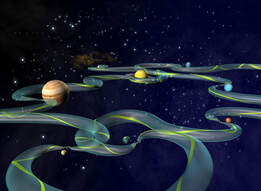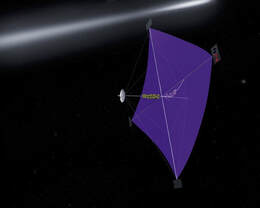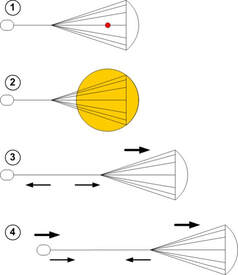Timeline Activity -
DUE Monday, May 20, 2019
Create your timeline here
Save your file as a PDF and Email your completed project to: mrgmercer@gmail.com
Create a timeline of the historic events in space exploration. The should be at least 10-15 important points on your timeline including brief statements on each event.
o Add pictures for more credit
o Make sure your save your work and email it to yourself
You may choose from the following topics:
DUE Monday, May 20, 2019
Create your timeline here
Save your file as a PDF and Email your completed project to: mrgmercer@gmail.com
Create a timeline of the historic events in space exploration. The should be at least 10-15 important points on your timeline including brief statements on each event.
o Add pictures for more credit
o Make sure your save your work and email it to yourself
You may choose from the following topics:
- Voyager 1 or Voyager 2 launch and journey
- US Space Exploration
- USSR Space Exploration
- NASA Projects
- ESA Project
Space Exploration Notes
A Brief History of Space Exploration
Dr. Werner von Braun was slated for execution to prevent capture by the Allies
¨ A “prize” for which the Russians and Americans competed
¨ Surrendered to Americans
¨ Became the “father” of the U.S. space program
Robert Goddard
Created the first liquid propelled rocket - 1926
Sputnik
¨ Sputnik puts America into near panic
¨ 4/12/61 USSR puts Yuri Gagarin into space
¨ America Responds with Project Mercury
John Glenn
¨ Mercury Freedom 7
¨ First American to orbit Earth 2/20/62
¨ Oldest person to travel in space (Space Shuttle)
Project Gemini
¨ Titan Rocket
¨ Two astronauts
¨ First “Space Walk” (EVA)
¨ Rendezvous with Agena modules and with other Gemini capsules
Valentina Tereshkova
- first woman in space
Tragedy Strikes the First Apollo Mission
- Crew die during a launch test, when a spark ignites the pure Oxygen environment of the Apollo 1 capsule
First Trip to the Moon
- Apollo 11 lifted on July 16, 1969, carrying Michael Collins, Edwin “Buzz” Aldrin, and Neil Armstrong.
- The World gathered, around radio & TV, in anticipation of the lunar landing...
- At 4:17:40 Eastern Daylight Time, Man set foot on the Moon.
America sent six more Apollo missions to the moon.
- A total of 12 Americans walked on the moon.
- The last one was Eugene Cernan.
Interplanetary Travel
Current accomplishments:
- Voyager 1: farthest man made object from Earth at 113 AU
- Will remain powered until ~2025
- Used gravity assists
- Manned missions to the Moon
The Future of Space Travel
Interplanetary Transport Network
- Gravitationally determined pathways that require little energy
Electric repulsion technology
- Generate electricity, use electricity to propel matter to generate thrust
- Generally low thrust, but can operate for long times
- Ion drives have already been developed (e.g. Deep Space 1)
Solar sails
- Radiation pressure from sun or laser on sail propels craft
- Some satellites use this technology to make minor flight adjustments
Nuclear thermal or solar thermal
- Nuclear or solar power used to heat up fluid which travels through nozzle to create thrust
Space Exploration Notes
The New Path for Human Space Exploration
The FY 2011 budget request challenges NASA to embark on a new human space exploration program that is sustainable and affordable.
The budget balances investments in future human spaceflight systems with obtainingkey knowledge about future destinations and demonstrating critical enabling technologies for human spaceflight and exploration.
What is the Strategy and Destination?
The future human spaceflight program will build through a steady sequence of achievements, from a set of crewed flights to test and prove systems required for exploration beyond Low-Earth orbit (LEO) early in the next decade, to a near-Earth object (NEO) mission in 2025, to missions to Mars’ environs by mid-2030s, followed by landing on Mars
This approach builds experience and capability through time, results in successive “firsts” (much like the Mercury and Gemini approach) and allows the human spaceflight systems to be developed serially rather than concurrently, making the endeavor affordable to the taxpayer
Although we cannot provide a date with certainty for the first human landing on Mars, we can identify essential capabilities needed for such a mission.
Blazing a Trail in the Solar System
NASA’s human spaceflight program seeks to extend human presence throughout the solar system
The President's FY2011 Budget Request takes a new approach to this goal, focusing on capabilities that will allow us to reach multiple destinations, including the Moon, Asteroids, and Mars and its moons
The investments seek to create the new knowledge and capabilities required for humans to venture beyond low Earth orbit .
Approach expands alternatives available for human exploration, currently limited by lack of strategic investment in technology development over past decades.
Future of Solar System travel
|
Interplanetary Transport Network
Gravitationally determined pathways that require little energy Electric repulsion technology
Solar sails
Nuclear thermal or solar thermal
Nuclear Pulse propulsion
|
Space Exploration Quiz
Please Read Below:
Give this test your best effort, good luck!
1st Hour Test
2nd Hour Test
6th Hour Test
Please Read Below:
Give this test your best effort, good luck!
1st Hour Test
2nd Hour Test
6th Hour Test
Please complete the following questions in your journal:
- What effect do you believe the competition between the United States and the USSR had on the beginning of the space programs for both countries?
- Why do you believe countries started space exploration with animals?
- What NASA program changed the direction of the US space program?
- In your opinion, what do you believe the future of space exploration should be? In 50 words or more describe what you think the US should do with respect to space exploration.


